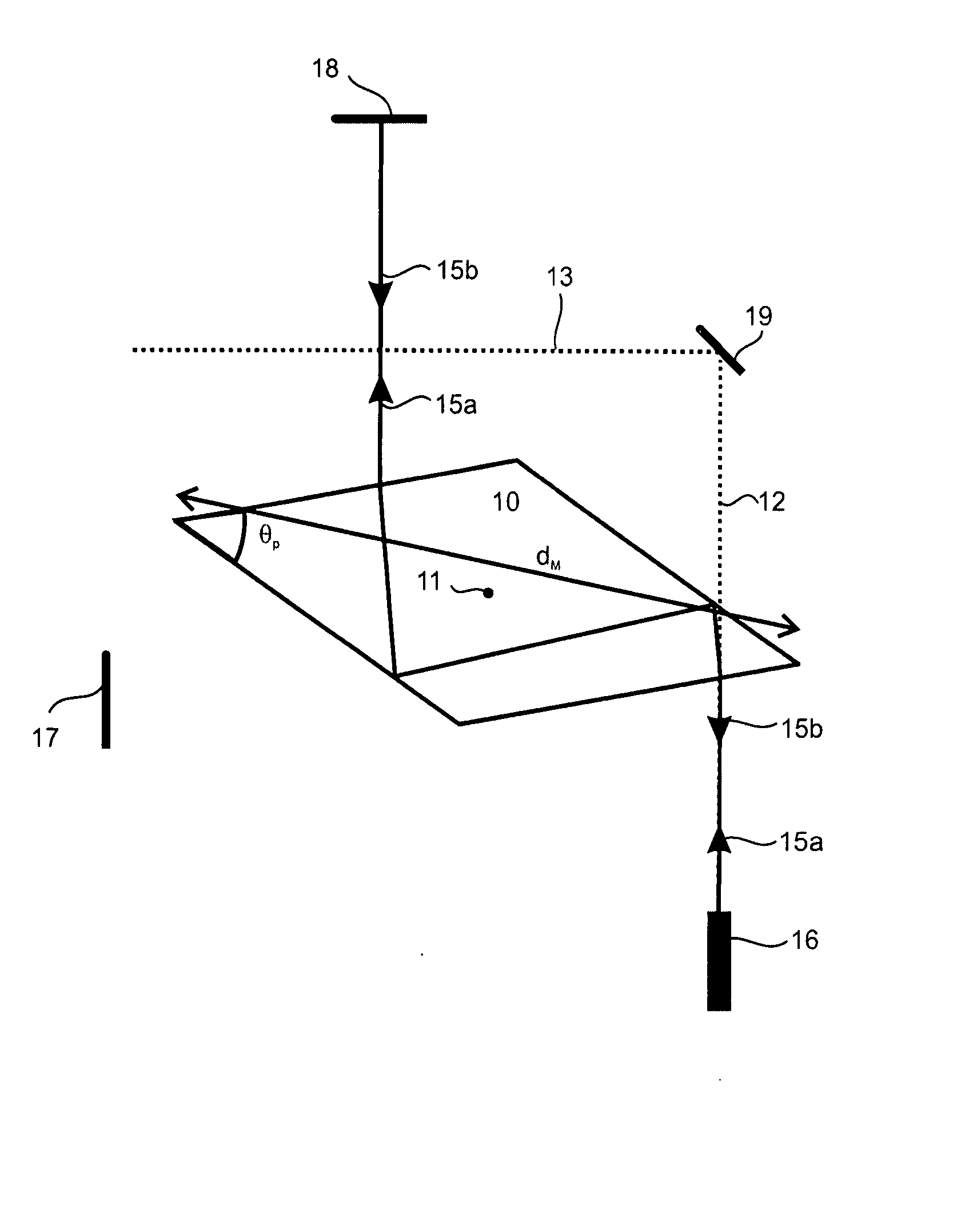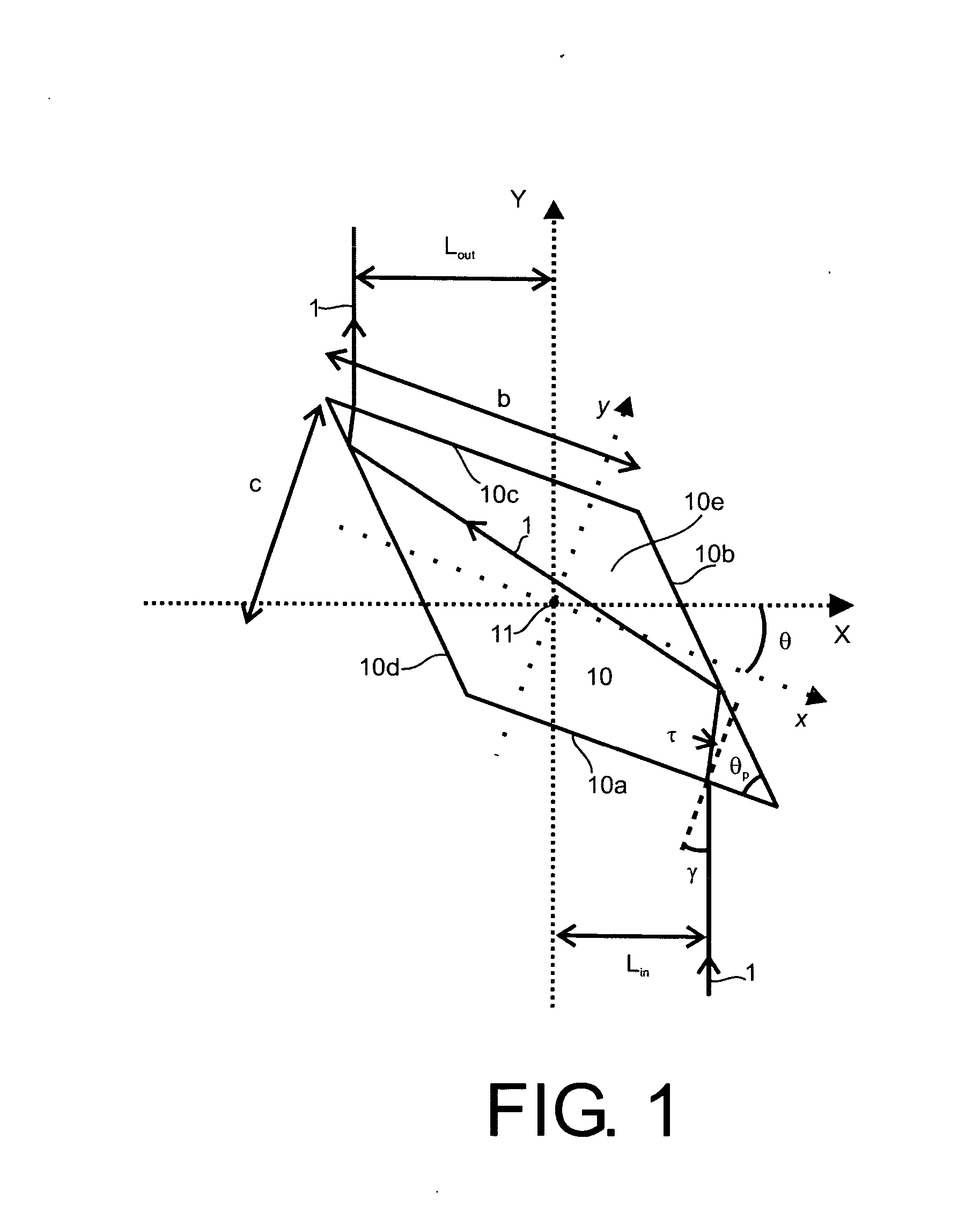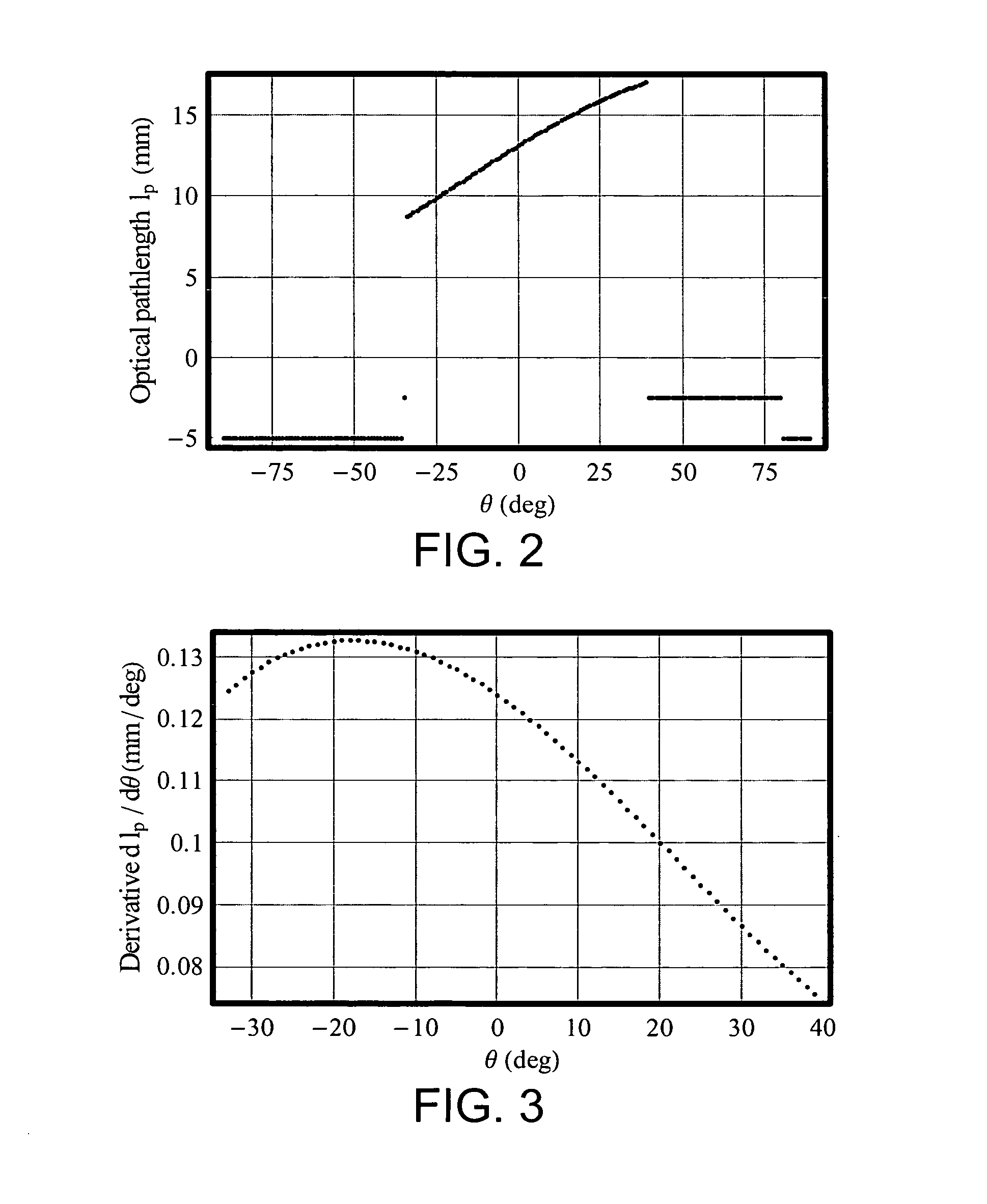Method and apparatus for scanning optical delay line
a delay line and optical delay technology, applied in the field of optical interferometry systems, can solve the problems of attenuated recombined beam, system limitation to repetition rate, 100 hz, etc., and achieve the effect of good performan
- Summary
- Abstract
- Description
- Claims
- Application Information
AI Technical Summary
Benefits of technology
Problems solved by technology
Method used
Image
Examples
first embodiment
[0066]FIGS. 7a,b schematically illustrate the invention showing how multiple insertions of the beam may be achieved. A prism 10, is mounted for rotation about an axis 11 passing through its centroid, orthogonally to parallelogram top and bottom bases of the prism 10, as in FIG. 1. The optical scanning optical delay line assembly also includes two mirrors 17,18 each for reflecting (by 180°) beams passing through the prism 10 at two ranges of angular positions, and a third mirror for reflecting the beam from a line of incidence 12 with the prism 10 over a first range of angles, and a reinsertion line 13 that intersects the prism 10 over a second range of angular positions.
[0067] In FIG. 7a, a beam 15a exits an optical coupler 16 along a line of incidence 12. Incidence line 12 is directed orthogonally to the rotational axis 11 from which it is offset by the distance Lin, as defined in FIG. 1. The distance Lin is intermediate one half a major diagonal (dM) of the prism 10 and one half a...
second embodiment
[0070] the invention uses off centroid rotation which improves the selection of the range of angles the line of incidence makes with a front face of the prism. By rotating off centroid, only one surface is used as the front surface, and consequently there is no alternation of front and rear surfaces to double the number of times the beam is inserted in the prism, per cycle. Accordingly multiple prisms may be used to improve the duty cycle.
[0071] An example of the second embodiment is schematically illustrated in FIGS. 8a,b. The scanning optical delay line includes five prisms 31-35 fixed on a rotating disc 25. Each of the prisms 31-35 is oriented in a rotationally symmetric manner so that they all provide substantially the same range of angular variances with respect to lines of incidence 27 and reinsertion 28. Basically this embodiment has two additional parameters for optimization: a radial distance R of a centroid of the prism from the rotational axis; an angle θ0 between a radia...
PUM
 Login to View More
Login to View More Abstract
Description
Claims
Application Information
 Login to View More
Login to View More - R&D
- Intellectual Property
- Life Sciences
- Materials
- Tech Scout
- Unparalleled Data Quality
- Higher Quality Content
- 60% Fewer Hallucinations
Browse by: Latest US Patents, China's latest patents, Technical Efficacy Thesaurus, Application Domain, Technology Topic, Popular Technical Reports.
© 2025 PatSnap. All rights reserved.Legal|Privacy policy|Modern Slavery Act Transparency Statement|Sitemap|About US| Contact US: help@patsnap.com



